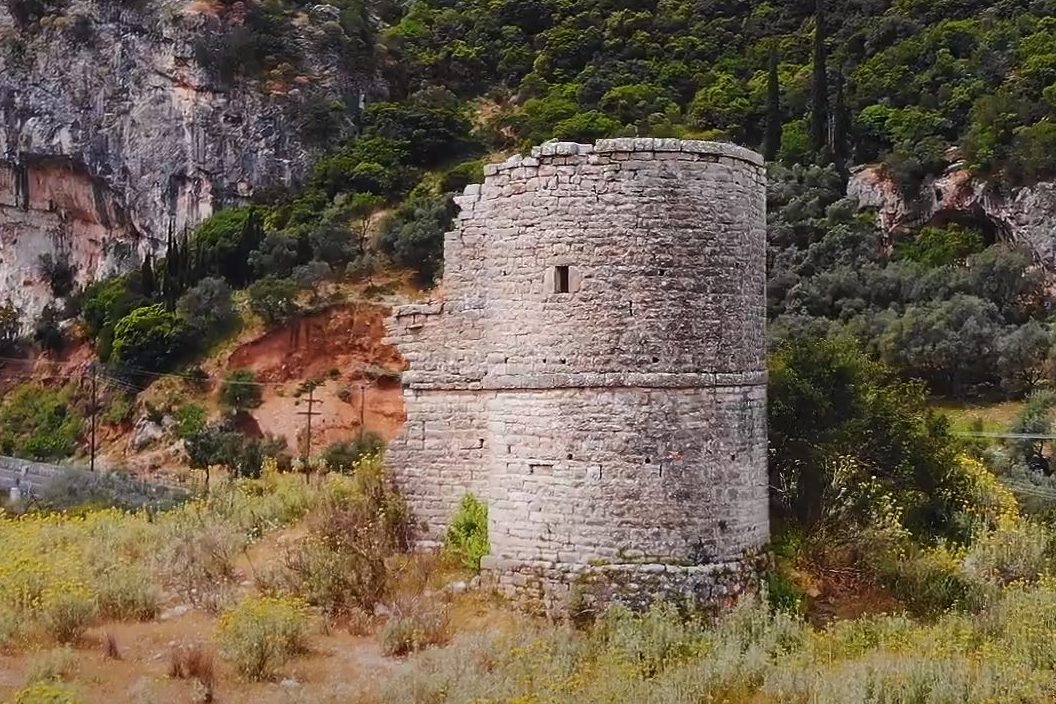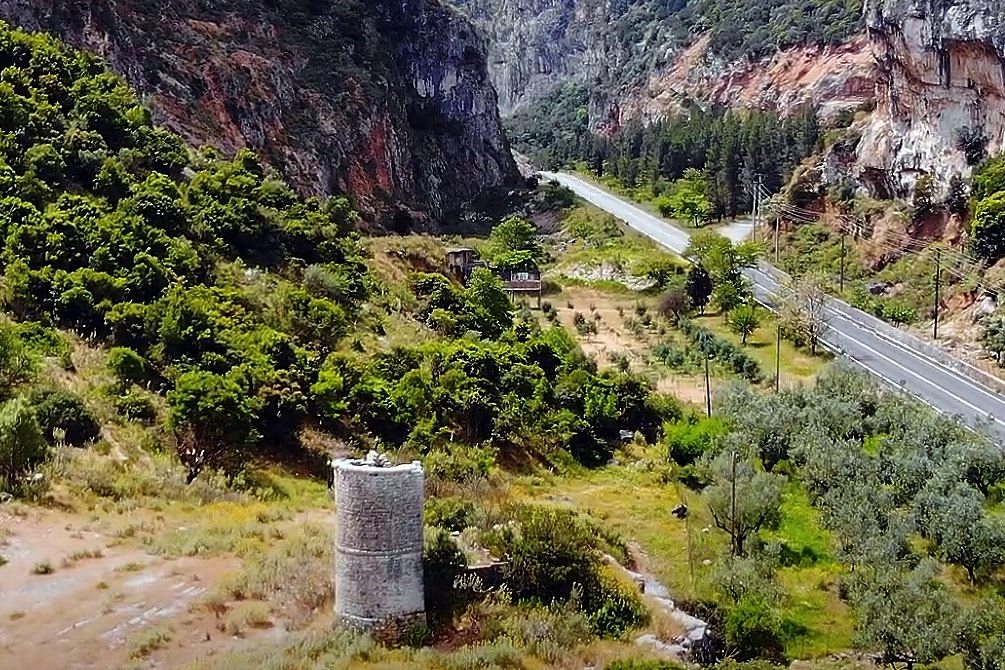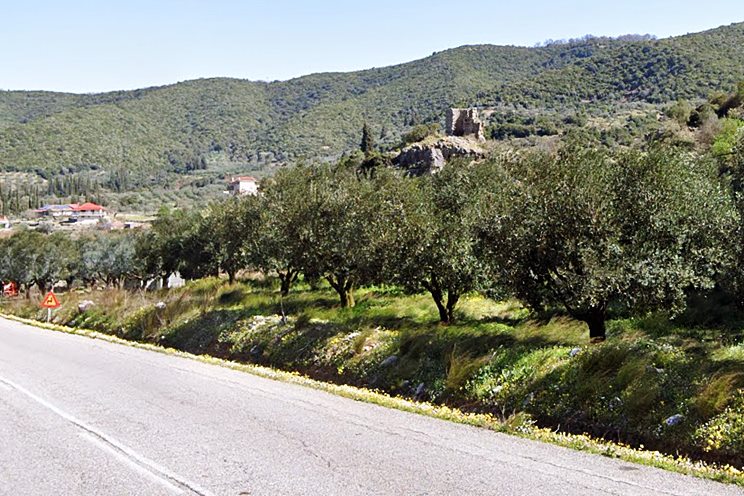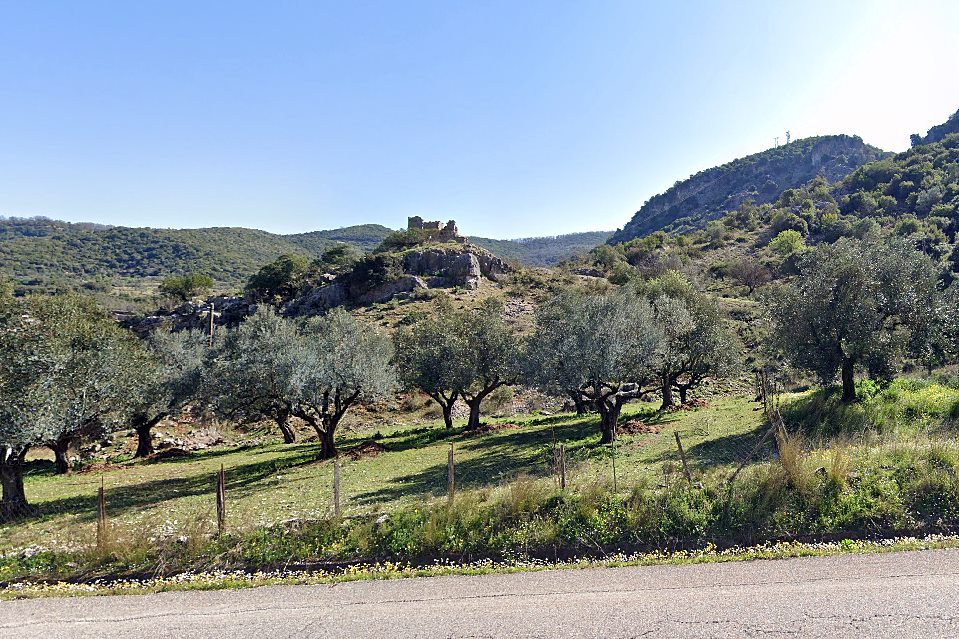Frangouleï ka, Missolonghi, Aetolia-Akarnania,West Greece
Tower of Kleisoura
| Location: |
| At the north entrance of the narrow passage between Frangouleïka - Chrysovergi in Aetolia, overlooking the national road |
| Region > Prefecture: | 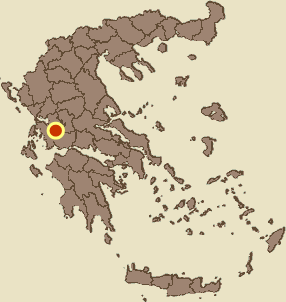 |
| West Greece Aetolia-Akarnania | |
| Municipality > Town: | |
| City of Missolonghi • Frangouleï ka | |
| Altitude: | |
|
Elevation ≈ 155 m (Relative Height≈20 m) |
| Time of Construction | Origin | |
| probably 18th cent. | OTTOMAN |
|
| Castle Type | Condition | |
| Tower House |
Rather Poor
|
Ruins of a tower or, most likely, a tower-house above the national road Rio - Agrinio, at the northern entrance of the narrow gorge formed between the villages of Frangouleika and Chrysovergi in Aetolia, on a low hill, a little south of Frangouleika.
Location & Strategic Scope
The passage (Gr. kleisoura), 3 km long, is impressive. It is surrounded by vertical rocks which nowadays are used as a climbing field. The passage is identified with the “Cycneia Tempe”, a location mentioned in the 7th book of the Metamorphoses of Ovid.
The main road from the area of Messolonghi to Agrinio passed through this kleisoura (even today). In other words it was an important passage and, in times when robbery was flourishing, it was ideal for ambush.
A logical assumption is that the tower was built at this strategic point to monitor and protect the dangerous passage. This assumption is supported by the name “kazarma”.
The Name of the Castle
The tower is also known as “Kazarma”. The word is of Venetian origin that passed into Turkish with the meaning of the central outpost.
The kazarmas were usually small forts, which were the center of command of an area where there were other smaller guard-posts.
Despite this name, it is possible that the tower was not used as a military fort from the beginning.
History
Not many details are known about the history of the tower (who was its owner, for example). Also, it is not related to any incident of the war of the Greek Independence of 1821 or of modern Greek history.
The tower is mentioned by the French traveler M. Raoul de Malherbe who visited the place in 1834 and who in his work “L'Orient. 1718-1845: Histoire, politique, religion, moeurs, etc.” records that “at the exit of the strait on the right there are the ruins of two towers that once guarded the strait”.
According to Malherbe, there were two towers on the same side at the northern exit of the pass and they were in ruins as early as 1834 (so they were built, inhabited and abandoned many years ago). Today, the ruins of only one tower are visible.
A photograph of the tower from 1892/1893.
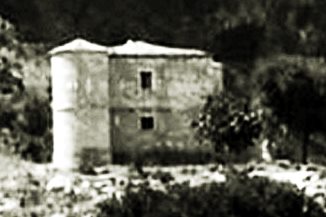
This is a detail from a photograph of the Woodhouse archive of the Nicholson Museum (new name: Chau Chak Wing Museum) of the University of Sydney. It is one of the many photographs taken by the museum’s curator William Woodhouse in the period 1892-1935 throughout Greece. (See the full photo above in the “Artwork”.) In the photo, the tower has a tiled roof and large windows and, in general, a form that does not correspond to a defensive structure, while it does not look dilapidated (it has probably been renovated since Malherbe saw it). In the photo we see a mansion with a tower rather than an outpost. Such buildings were quite common during the Turkokratia in the 17th and especially in the 18th century, usually owned by Ottoman landowners outside the villages. There are several similarities with other tower houses of that period: the mansion of Roufos, the tower of Muhtar, the mansion of Levidis.
Given these facts, the most likely scenario for the use and dating of the tower is that it was built sometime around the 18th century to be used as a residence and later, perhaps towards the end of the same century, was abandoned by its owners and used as outpost to deal with the robbery, which must have been a problem in that area due to the busy road and the morphology of the terrain. The fact that it was in rather good condition in 1892 indicates that it was probably renovated and reused later.
All of these, of course, are hypotheses for which we cannot be sure, in the absence of references from historical sources.
| First entry in Kastrologos: | March 2021 |
Sources
- Website ΜΗΧΑΝΗ ΤΟΥ ΧΡΟΝΟΥ - «Κύκνεια Τέμπη των αρχαίων». Με αυτά τα λόγια περιέγραψε ο έλληνας λόγιος, Δημήτρης Βικέλας, το φαράγγι της Κλεισούρας στην Αιτωλοακαρνανία, το 1884.
- Website agrinionews - Πύργος της Κλεισούρας
- Website ariafreepress - Πύργος της Κλεισούρας - Καζάρμα
- Video by the user Andreas Koutsothanasis Ο πύργος της Κλεισούρας
|
|
| Access |
|---|
| Entrance: |
| Free access |
| Similar |
|---|
| Tower of Drosinis |
| Koulia of Evinochori |
| Tower of Levidis hill |
| Tower of Muhtar |
| Tower of Roufos |



